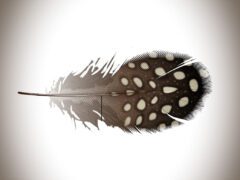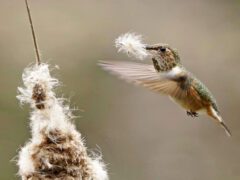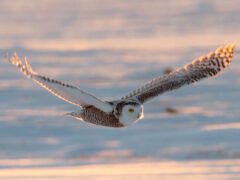The Four Keys to ID
- Size & Shape
Piping Plovers are round and stocky little plovers that frequently stand in a horizontal position. They also have round heads and large dark eyes that give them a big-eyed look. The bill is short and stubby.
Relative Size
Larger than a Least Sandpiper, smaller than a Black-bellied Plover.

 between sparrow and robin
between sparrow and robinMeasurements
- Both Sexes
- Length: 6.7-7.1 in (17-18 cm)
- Weight: 1.5-2.2 oz (43-63 g)
© Evan Lipton / Macaulay Library
- Color Pattern
Piping Plovers are sandy grayish brown birds with white underparts and a narrow, often broken collar. They have yellowish orange legs in all seasons. In the breeding season, they have an orange bill with a black tip, a black collar, and a black line on the forehead. In the nonbreeding season, the bill is black and the collar fades to gray and doesn't go all the way around the breast.
© Gates Dupont / Macaulay Library - Behavior
Piping Plovers are nearly invisible until they run a short distance, stop, and tilt forward to pull an insect or worm from the soft sand. They tend to forage alone or in small groups sticking to the higher parts of the shoreline relative to other shorebirds.
- Habitat
Piping Plovers breed along ocean shores in the Northeast and along lakeshores and alkali wetlands in the northern Great Plains and Great Lakes. They nest above the high water mark in soft sandy areas with sparse vegetation. In the winter, they use coastal beaches, sandflats, and mudflats.
© Keith M Kemp / Macaulay Library












